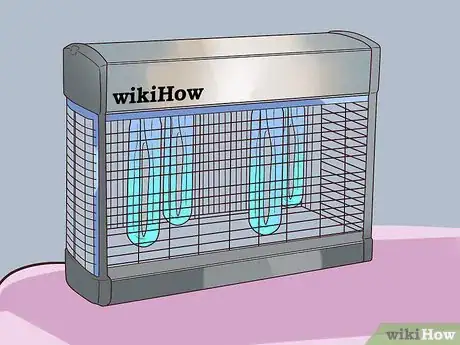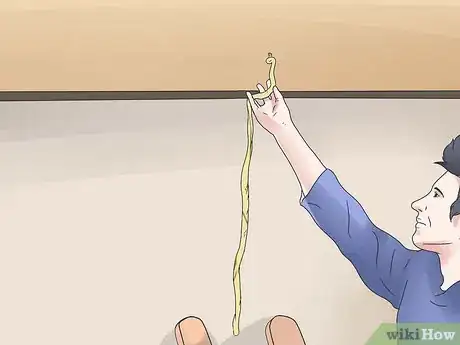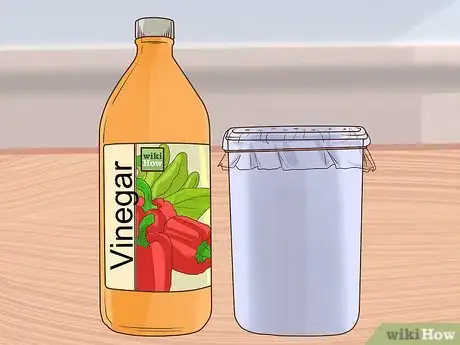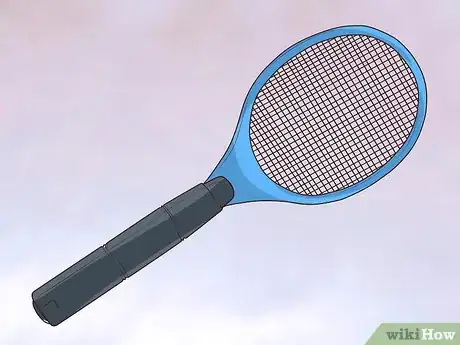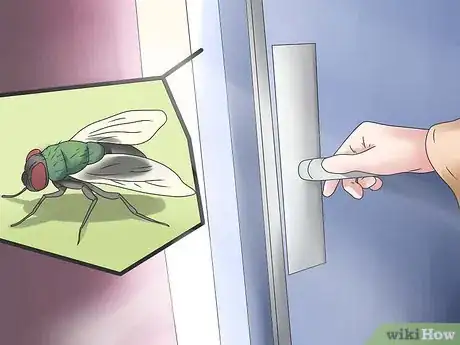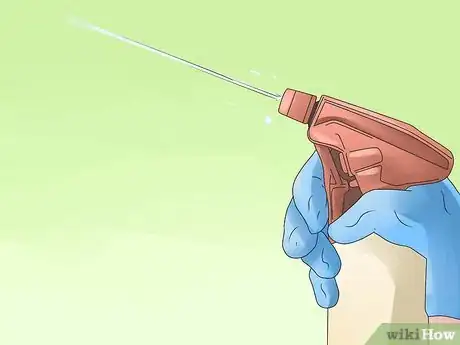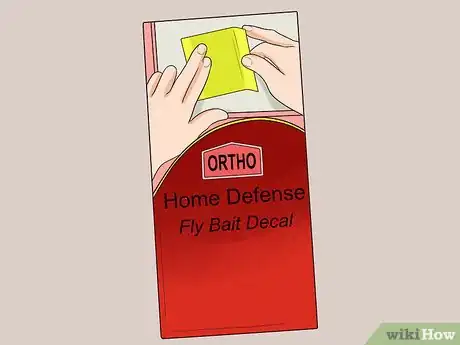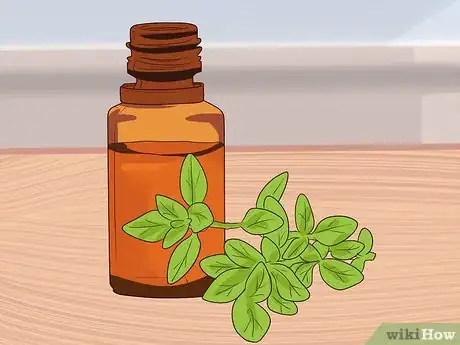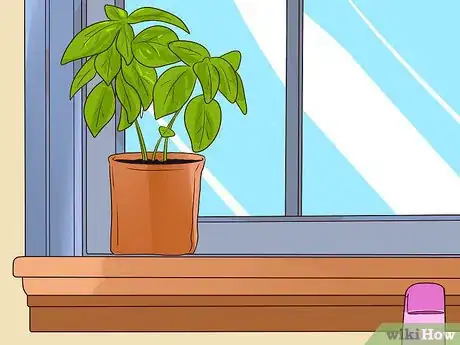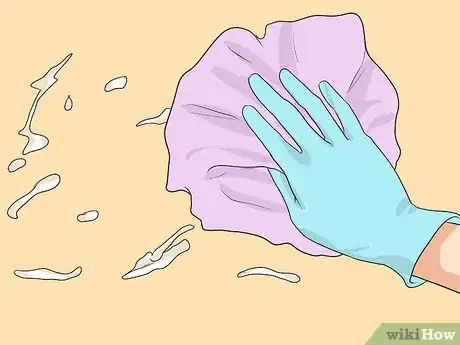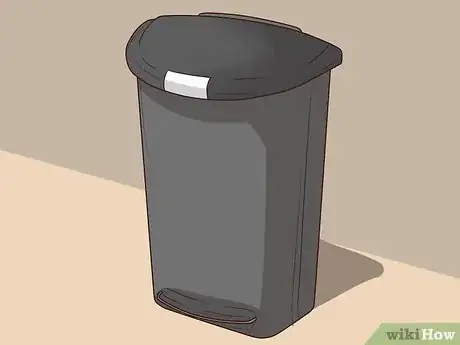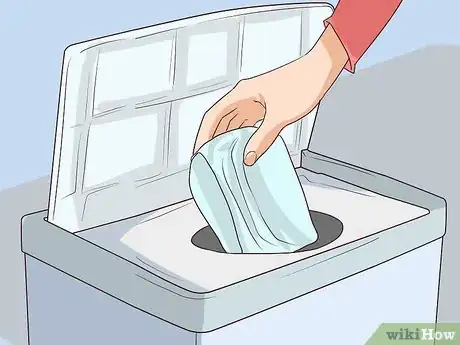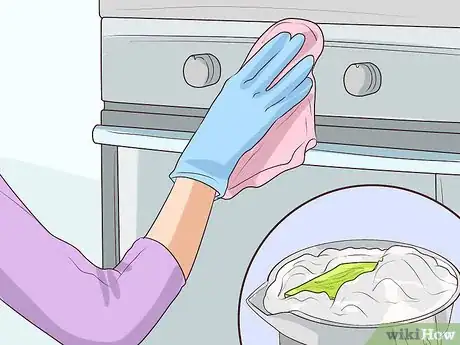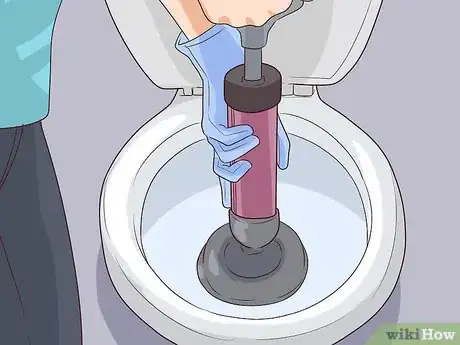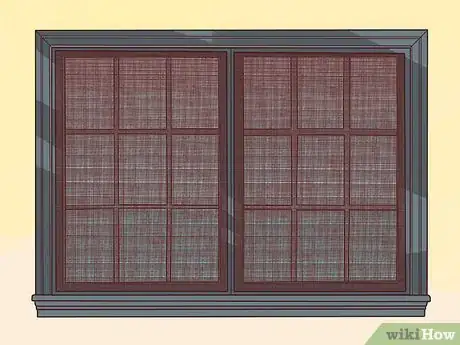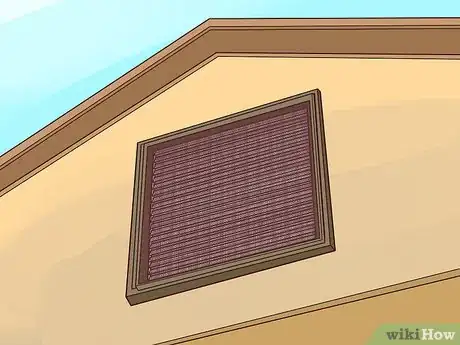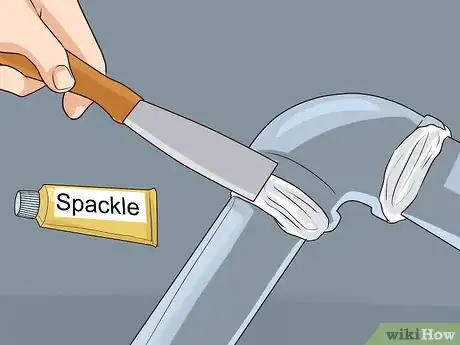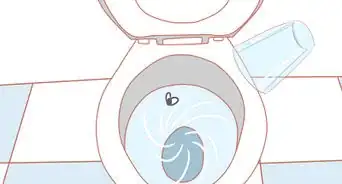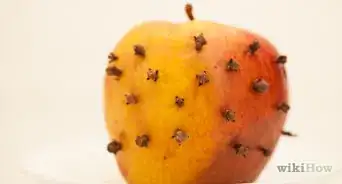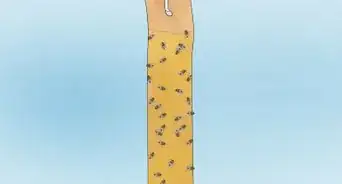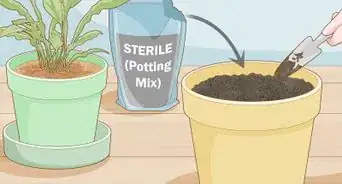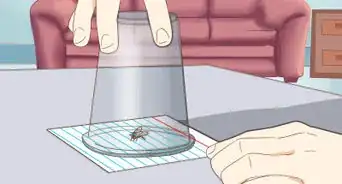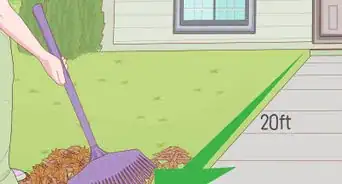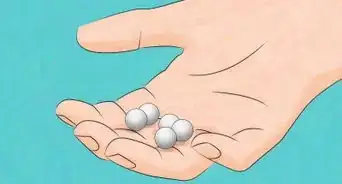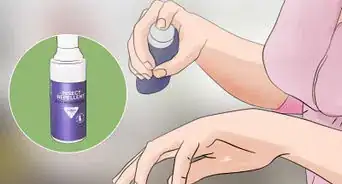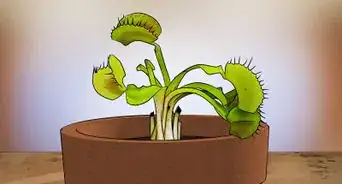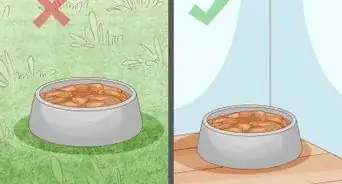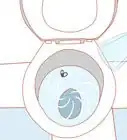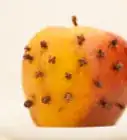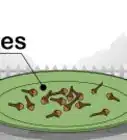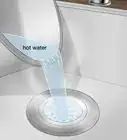This article was co-authored by Joshua Bloom and by wikiHow staff writer, Megaera Lorenz, PhD. Joshua Bloom is a Pest Control Specialist and the Vice President of Operations of Standard Pest Management, a pest control company based in New York City. He has over 20 years of experience in the pest control industry and specializes in commercial and large facility pest control management. Standard Pest Control also specializes in ant, bed bug, cockroach, fly, and rodent control. Joshua is licensed by the NYSDEC (New York State Department of Environmental Conservation) for termite control.
There are 8 references cited in this article, which can be found at the bottom of the page.
wikiHow marks an article as reader-approved once it receives enough positive feedback. This article has 47 testimonials from our readers, earning it our reader-approved status.
This article has been viewed 5,125,580 times.
Flies are an almost unavoidable nuisance in most homes, especially during the warmer parts of the year. However, there are steps you can take to minimize the presence of flies in your house.
Steps
Trapping Flies
-
1Use light traps to catch larger flies. UV light traps are ideal for catching houseflies and other relatively large species of flies and pest insects. Flies are lured in by the light, and then trapped on a glue board or killed by an electric shock.[1]
- Place your light traps approximately 4-6 feet (1.2-1.8 meters) above the floor.
- Position light traps so that they are not be visible from outside your house, so that the light does not lure new flies into your home.
- Make sure that you use a light trap that is designed for indoor use, as high-voltage outdoor bug zappers can create an unsanitary mess.
-
2Use fly tape to catch flies. Fly tape, or fly paper, is a simple and effective tool for catching large numbers of adult flies. Purchase one or more rolls of fly tape (like TAT or Black Flag) and hang them up in areas where flies tend to congregate.[2]
- Do not hang fly tape directly above areas where you will be preparing or eating food. Flies or fly carcasses may become detached and drop off the tape.
Advertisement -
3Use vinegar or wine traps to catch fruit flies. Fruit flies are extremely attracted to fermented fruit products, like red wine and apple cider vinegar. You can create a variety of simple traps using wine or vinegar as a bait to lure in and kill adult fruit flies:[3]
- Put some apple cider vinegar in a bottle or jar and cover the opening with plastic wrap. Use a rubber band to hold the plastic wrap in place. Create a small hole in the plastic wrap so that fruit flies can smell the vinegar and crawl in. The flies will be unable to escape, and will drown in the vinegar.
- Put some vinegar in a bowl and mix in a few drops of dish soap. The dish soap will disrupt the surface tension of the vinegar, causing the flies to drown if they try to land on the surface of the liquid.
- Set out an open red wine bottle with a tiny amount of red wine left in it. The flies will be able to enter the bottle easily, but will have a difficult time getting out again.
- You can also buy ready-made traps, like Aunt Fannie’s FlyPunch! or Terro fruit fly traps.
- Keep fruit flies away by keeping your kitchen clean. For example, be sure to get rid of any old fruit or unwashed bottles that contained juice, soda, or beer.[4]
-
4Swat flies with an electronic paddle swatter. Electronic swatters are a more sanitary alternative to traditional fly swatters. They kill flies and other insects instantly on contact, eliminating the need to crush the fly with the swatter and create a mess.[5]
- Electronic swatters are fairly safe, but they can still deliver an uncomfortable shock. Keep them away from pets and children.
Using Insecticides
-
1Treat doorways with pyrethrin spray. Pyrethrin is a relatively safe natural insecticide derived from chrysanthemum flowers. There are also synthetic forms made from the same chemicals as the naturally-occurring substance, called pyrethroids.[6] Spraying doorways can help deter flies from entering your home.[7]
-
2Kill flies directly with pyrethrin spray. In addition to treating doorways, you can also spray pyrethrin directly on flies to kill them quickly. However, take care not to use pyrethrin products around food or in food-preparation areas. Although pyrethrin is relatively safe, it can still be harmful to humans and pets if ingested or inhaled in large quantities.[8] Follow manufacturer safety instructions carefully.
-
3Use insecticide fly bait. A variety of commercial fly baits are available on the market. Flies eat the baits and are poisoned by the insecticidal ingredients. Baits can be purchased in the form of pre-baited traps, pellets, or liquid solutions that can be applied to areas where flies like to gather.[9]
- A popular form of fly bait is the Ortho Home Defense Fly Killer Window Decal. These decals are affixed to glass windows. Flies eat the pesticide coating on the decal and die, typically on or near the windowsill.
- Fly baits can be dangerous to pets and children, so be sure to follow manufacturer safety instructions and use them in places that your kids and pets can’t easily reach.
Using Natural Fly Repellants and Killers
-
1Use essential oils to kill and repel flies. Many plants produce natural insecticides and insect repellants. Essential oils from these plants can be a useful and relatively safe way to kill or drive away flies in your home. Essential oils of thyme, clove, geranium, basil, lavender, lemongrass, and peppermint all have fly repellant or insecticidal properties.[10]
- Use an essential oil spray to treat areas where flies gather.
- Put a few drops of fly-repellant oil in an essential oil diffuser and place it in a room where flies are a problem.
-
2Grow fly-repellant herbs in your house. Basil, bay leaf, mint, rosemary, and lavender are all herbs that flies avoid.[11] Growing herbs in your kitchen windowsill is a great way to keep away flies, with the bonus of providing fresh herbs and spices for your cooking.
-
3Use diatomaceous earth to kill flies. Diatomaceous earth is a non-toxic insecticide dust that simply works by desiccating and damaging the exoskeletons of insects. Use a small pesticide duster to puff a little diatomaceous earth onto your houseplants, into garbage cans, and on other surfaces where flies congregate.[12]
Keeping Flies Out
-
1Clean up food and food waste immediately. Flies are attracted to moist organic material, which acts as both a source of food and a place to lay eggs. Make sure they don’t have access to food, garbage, or compost in your house. Dispose of your trash properly by keeping it bagged or in a closed can, and keep the area around your trash can clean.[13]
- Store human and pet food in the fridge or in tightly sealed containers.
- Wash dishes immediately after use.
- Clean up any spilled food as soon as you notice it.
- Dispose of food waste in a covered garbage can or a sink disposal.
-
2Keep your garbage disposal areas sealed and sanitary. Keep garbage and compost in well-sealed containers, and take out the garbage frequently. Check for signs of pupae or maggots underneath garbage container lids and liners. Occasionally wash your garbage and compost containers with hot, soapy water.[14]
-
3Get rid of used diapers and animal waste. If you have cats, change the kitty litter frequently. Diaper bins can also be a major attraction for flies. Take out any garbage containing human or animal waste as quickly as possible.[15]
-
4Clean under and around appliances. Clean under and around your fridge and other kitchen appliances, especially in areas where condensation gathers, with warm, soapy water.[16] After cleaning up these areas, thoroughly rinse and wring out any mops, sponges, or cleaning rags that you used, and hang up mops and rags to dry. Flies can also breed in wet and dirty mops and rags.
-
5Clean your drains. Built up organic material in drains can attract certain species of flies. Use a plunger or drain cleaning tool to clear organic material out of clogged or slow drains, then clean the drain with a stiff brush.[17]
- Chlorine bleach and commercial drain cleaners like Drano are not typically effective for eliminating fly infestations in drains.
- If scrubbing is not enough, try an antibacterial drain cleaner like Bio-Clean. Make sure you select a product that is compatible with your septic system. These products typically need to be re-applied several times over a period of a few weeks in order to be effective.
- Treat your drains with S-hydroprene (Gentrol), a gentle insecticide that prevents fly larvae from maturing.
-
6Use screens on windows and doors. One of the easiest ways for flies to enter your home is through open windows and doors. If you’d like to have windows and doors open to let in a breeze, make sure you have screens in place to keep unwanted insects out. If you already have screens on your windows, inspect them regularly, and repair or replace them if they become damaged or are missing.[18]
- The best way to rid your home of flies is to seal them out.
-
7Screen open vents in your home. Flies can come in through roof and attic vents and other small openings that connect the inside of your home to the outside. You may wish to cover these vents with screen so that air can still flow freely through them, but flies cannot enter.[19]
-
8Fill in cracks, crevices, and spaces around pipes. If you suspect flies are coming in through open cracks and crevices in your home, fill in these openings with spackle, caulk, or expanding foam.[20]
Expert Q&A
-
QuestionHow can I keep flies from coming into my house?
 Joshua BloomJoshua Bloom is a Pest Control Specialist and the Vice President of Operations of Standard Pest Management, a pest control company based in New York City. He has over 20 years of experience in the pest control industry and specializes in commercial and large facility pest control management. Standard Pest Control also specializes in ant, bed bug, cockroach, fly, and rodent control. Joshua is licensed by the NYSDEC (New York State Department of Environmental Conservation) for termite control.
Joshua BloomJoshua Bloom is a Pest Control Specialist and the Vice President of Operations of Standard Pest Management, a pest control company based in New York City. He has over 20 years of experience in the pest control industry and specializes in commercial and large facility pest control management. Standard Pest Control also specializes in ant, bed bug, cockroach, fly, and rodent control. Joshua is licensed by the NYSDEC (New York State Department of Environmental Conservation) for termite control.
Pest Control Specialist Check the screens on your windows and make sure that there are no rips or tears, and keep your doors closed as much as possible. Also, dispose of your trash properly—keep it bagged or in a closed can, and keep the area clean.
Check the screens on your windows and make sure that there are no rips or tears, and keep your doors closed as much as possible. Also, dispose of your trash properly—keep it bagged or in a closed can, and keep the area clean.
References
- ↑ http://agrilifeextension.tamu.edu/wp-content/uploads/2016/05/how-to-get-rid-of-flies-in-house.pdf
- ↑ http://www.popularmechanics.com/home/how-to/a25429/how-to-get-rid-of-flies/
- ↑ http://www.goodhousekeeping.com/home/cleaning/tips/a25042/how-to-kill-fruit-flies/
- ↑ Joshua Bloom. Pest Control Specialist. Personal interview. 8 May 2020.
- ↑ http://www.popularmechanics.com/home/how-to/a25429/how-to-get-rid-of-flies/
- ↑ https://www.atsdr.cdc.gov/phs/phs.asp?id=785&tid=153
- ↑ http://agrilifeextension.tamu.edu/wp-content/uploads/2016/05/how-to-get-rid-of-flies-in-house.pdf
- ↑ https://www.atsdr.cdc.gov/phs/phs.asp?id=785&tid=153
- ↑ http://agrilifeextension.tamu.edu/wp-content/uploads/2016/05/how-to-get-rid-of-flies-in-house.pdf
- ↑ https://www.ncbi.nlm.nih.gov/pubmed/24382265
- ↑ http://www.petmd.com/dog/care/evr_dg_how-to-keep-flies-off-dogs
- ↑ https://www.southernstates.com/articles/diatomaceous-earth.aspx
- ↑ Joshua Bloom. Pest Control Specialist. Personal interview. 8 May 2020.
- ↑ http://agrilifeextension.tamu.edu/wp-content/uploads/2016/05/how-to-get-rid-of-flies-in-house.pdf
- ↑ http://www.popularmechanics.com/home/how-to/a25429/how-to-get-rid-of-flies/
- ↑ http://agrilifeextension.tamu.edu/wp-content/uploads/2016/05/how-to-get-rid-of-flies-in-house.pdf
- ↑ http://agrilifeextension.tamu.edu/wp-content/uploads/2016/05/how-to-get-rid-of-flies-in-house.pdf
- ↑ Joshua Bloom. Pest Control Specialist. Personal interview. 8 May 2020.
- ↑ http://www.popularmechanics.com/home/how-to/a25429/how-to-get-rid-of-flies/
- ↑ http://www.popularmechanics.com/home/how-to/a25429/how-to-get-rid-of-flies/
About This Article
If you've already removed any garbage that might be attracting your flies but they are still pestering you, you can get rid of flies in the house by putting out bowls filled with vinegar or wine mixed with dish soap, which will trap the flies. You can also try placing fly-repellant herbs like basil and mint around your home. If nothing is working, you can also try sprinkling some non-toxic insecticide over your houseplants and garbage cans. For more ways you can get rid of pesky flies, like using essential oils, light traps, and fly tape, keep reading!
